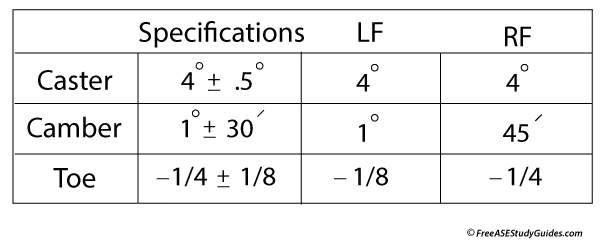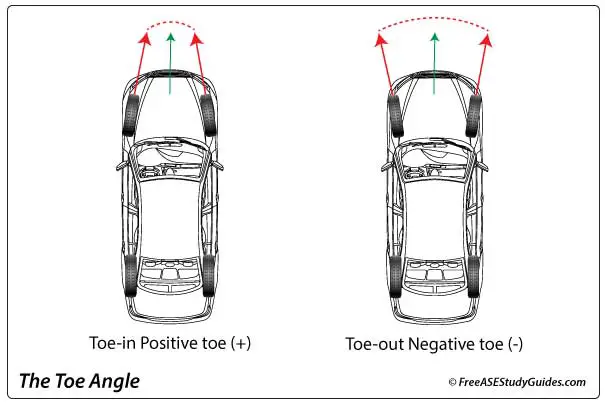ASE A4 Steering and Suspension Practice Test

41. Technician A says the vehicle in the chart above is within specifications. Technician B says the vehicle's front toe is out of specification. Tire wear will result from this condition. Who is correct?
- A. Technician A
- B. Technician B
- C. Both A and B
- D. Neither A or B
42. Technician A says worn steering linkage results in loose steering and vehicle wander. Technician B says worn rack bushings can cause changes to the vehicle's toe angle after a wheel alignment. Who is correct?
- A. Technician A
- B. Technician B
- C. Both A and B
- D. Neither A or B
43. There is noticeable wear on the left front tire of a rear-wheel-drive vehicle. The technician suspects the camber angle is out of specification. All these characteristics of camber are true EXCEPT:
- A. Negative camber causes wear on the tires inside the tread.
- B. An out-of-specification camber angle will result in a steering pull condition.
- C. The vehicle will pull to the side with the most positive camber.
- D. Camber is the forward or rearward tilt of the steering axis viewed from the side of the vehicle.
44. A vehicle makes a clunking sound and pulls to the right when the brakes are applied. During an alignment check, the technician noticed too much negative caster on the right front wheel. Technician A says a seized brake caliper is most likely causing this clunk. Technician B says a worn strut rod bushing is most likely causing this condition. Who is correct?
- A. Technician A
- B. Technician B
- C. Both A and B
- D. Neither A or B
45. A vehicle’s front tires are feathered. Which of the following is MOST likely causing this condition?
- A. Excessive positive caster.
- B. Excessive negative caster.
- C. The rear toe angle.
- D. The front toe angle.
